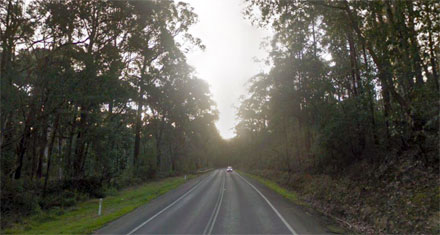
VicForests made a net profit of $1.2 million on sales of about $101 million in 2017-18 despite big cutbacks in the state’s timber resource, according to the annual report of the government’s commercial forestry operator. The state-owned company, despite a small drop in the value of sales compared with the previous financial year, ended 2017-18 with no debt and with positive cash reserves. Source: Philip Hopkins for Timberbiz
“This has been achieved amid significant challenges, including substantial reductions in available harvest levels of Mountain and Alpine Ash,” VicForests’ chief executive, Nathan Trushell said.
Sales volume in 2017-18 was 1.29 million cubic metres.
The annual report, tabled in Parliament late last month, was audited by the Victorian Auditor-General’s Office.
Key features of the report include:
- The supply of D+ ash sawlogs will virtually halve in two years’ time.
- VicForests is conducting a review of its Community Forest operations in western Victoria, which deal mainly with specialty timbers.
- Delays in resource security have delayed contractors’ investment decisions, causing staff to leave, and thus have affected VicForests’ productivity.
- Under VicForests’ Aboriginal Engagement Policy, Aborigines in Gippsland will provide fire-fighting services to support the coupe regeneration program.
- Since 2014, about 657 colonies of the Leadbeater’s Possum (LP), which is listed as critically endangered, have been identified in various State forest, parks and reserves.
- A charge by DELWP alleging VicForests conducted unauthorised harvesting in East Gippsland was dismissed as invalid in Orbost Magistrates Court, which ordered that the case be dismissed.
- There was an overall decline in both employee and contractor injuries to record low levels.
The annual report said the 2016-17 ash sawlog harvest levels of 225,000 cubic metres (m3) per annum would be progressively lowered.
Ash D+ sawlog supply would be 153,000m3 by 2020-21, after which it would be about 130,000m3 per annum over the medium term.
VicForests’ resource outlook forecasts a medium-term supply of mixed species D+ sawlog from eastern Victoria of 100,000-115,000 m3.
These forecasts are based on supply from a hardwood timber resource of 450,000 hectares of State forests in the east of the state – about 6 per cent of publicly-owned forest.
Mr Trushell said strong demand for native hardwood in 2017-18 exceeded VicForests’ capacity to supply, with sales limited by resource availability.
VicForests sold 476,705m3 of saw log, 768,179m3 of residual log and 48,418m3 of other products, which include mainly firewood but also fencing timbers, poles and woodchop logs.
Low grade log and pulpwood were supplied for pallets, sawn products, as well as pulp and paper production and log and woodchip exports.
“Production of sawlog was down from the previous year as VicForests transitioned to lower ash species harvest levels,” Mr Trushell said.
Of the 657 LP colonies identified since 2014, 555 in State Forest General Management Zones are protected with a 200-metre timber harvest exclusion zone.
“The remaining colony sites are protected wholly within park boundaries or a combination of Park, Formal Reserve and Special Protection zone tenures,” he said. “Of the 555 on GMZ, 96 were identified prior to 2014.”
Thus 459 LP colony sites had been protected to date under the recommendations of the LP Advisory Group.
Mr Trushell said LP observations were recorded more often in mixed age-class stands of 1939 fire regrowth and younger timber harvesting regrowth than in old growth trees. The old growth trees, he said, “were expected to be the preferred, if not exclusive, habitat.”
Mr Trushell said a VicForests internal study investigating LP use of varying forest classes and types (mixed species or ash-dominated) found six new colonies located up to 15 kilometres outside the previously known range.
“Observations show they are present in both mixed-species and ash-dominated forests,” he said.
“Further investigation of their habitat is under way, documenting the retention of hollow-bearing trees in informal reserve areas and the use of artificial hollows.”
The report is available at http://vicforests.com.au/about-vicforests/corporate-reporting-1/corporate-reports





